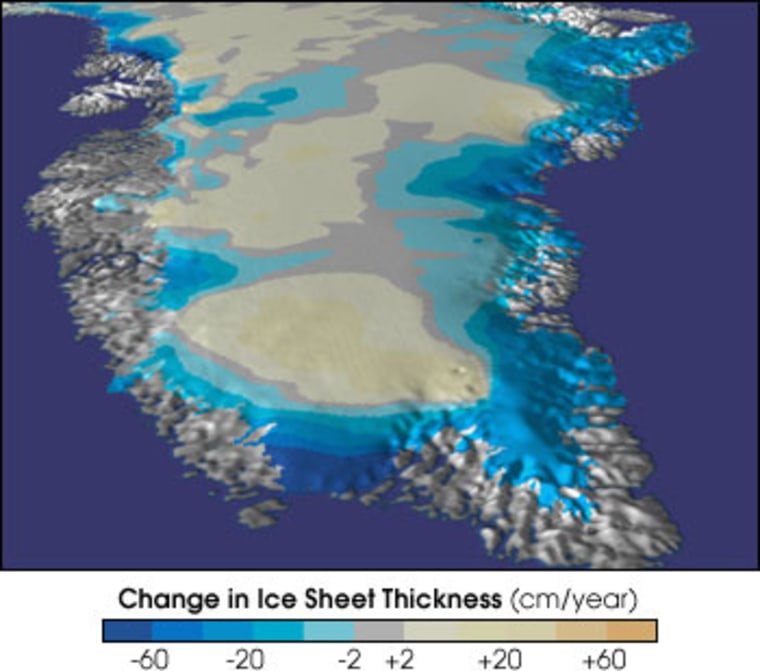Following two recent studies on changes to Antarctic and Greenland ice sheets, NASA is touting a survey that it says confirms “climate warming is changing how much water remains locked in Earth’s largest storehouses of ice and snow.”
In a press release for the survey, NASA directly tied the changes to warming and described the survey as “the most comprehensive” ever in both regions.
That stand can in part be explained by lead author Jay Zwally’s warning.
“If the trends we’re seeing continue and climate warming continues as predicted, the polar ice sheets could change dramatically,” he said in the press release last Wednesday. “The Greenland ice sheet could be facing an irreversible decline by the end of the century.”
But Zwally, a scientist at NASA's Goddard Space Flight Center in Greenbelt, Md., told MSNBC.com that the press release also follows an internal NASA change that seems to be taking place to allow scientists greater freedom.
Complaint made a difference?
A change in policy appears to be occurring after NASA scientist Jim Hansen complained about being silenced because of the Bush administration’s opposition to mandatory curbs on greenhouse gases that many scientists tie to global warming.
“A few months ago this press release might have been seriously edited or not approved,” Zwally said.
Based on satellite mapping of ice sheets and published in the Journal of Glaciology, the survey validated computer models projecting impacts on Earth from global warming.
“The survey documented for the first time extensive thinning of the West Antarctic ice shelves, an increase in snowfall in the interior of Greenland and thinning at the edges,” NASA said in the press release. “All are signs of a warming climate predicted by computer models.”
The press release followed the two Antarctica and Greenland studies, which included NASA research. And while those received considerable attention because of data that showed rapid changes in the ice, the press releases sent out with them did not emphasize global warming.
Warming ‘has really just started’
In the most recent press release, NASA did not directly tie the warming to humans and the burning of fossil fuels, which emits carbon dioxide, a key greenhouse gas.
But Zwally noted that the predicted climate warming cited in the press release is caused by manmade emissions. A natural warming cycle is technically possible, he said, but not likely given how closely the warming and models track.
Zwally said he expects to have even stronger satellite data within a year.
“We’re seeing the early signs of changes in the ice sheets,” he added. “The climate warming from greenhouse gases has really just started.”
